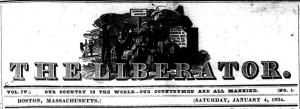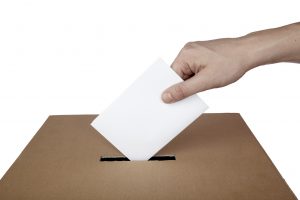In “Politics in a Box: Sarah Mapps Douglass and the Female Literary Association, 1831-1833”[1] Marie Lindhorst describes the Female Literary Association as a space where African American women “exchanged knowledge, skills, attitudes, values, and beliefs, and prepared for an increasingly public role in abolition and community circles.” [2] Such a statement is remarkable, considering that in antebellum America many of these associations, in general, remained the sphere of highly educated elites, and especially discriminated against women and people of color. Whether it be in a political or social context, women were not supposed to talk openly. That is why the Female Literary association was so meaningful, because by setting up their own parallel organizations, it became a space in which women could openly discuss political and social topics, subsequently resulting in the association being instrumental for abolitionist’s and women right movements in America.
Formed on September 20th 1831 by African American women, The Female Literary Association proved to be instrumental, as not only did it provided a sense of community and mutual support for these women, but also enabled them to debate and educate themselves on important political and social matters. As Lindhorst describes, they often placed their writings anonymously in a box, and would then read and discuss them later. This method of peer reviewing was significant for that era, as not only was it a way to make their writing more powerful and meaningful, but also demonstrates how these women functioned as both the producers and distributors of their texts. The ultimate goal of the FLA however, was to provide a space in which the connection between intellectual grown and the political and social well beings of African American could be facilitated.
 One woman who significantly helped achieve this goal was Sarah Mapps Douglass, who Lindhorst singles out for facilitating the publication of many FLA writings in the abolitionist newspaper, The Liberator, which subsequently served as beneficial platform for the FLA to openly express their commitment and activism in the antislavery movement on a public platform. Therefore, Lindhorst gives rise to an image of Sarah Mapps Douglass which highlights her understanding of the importance of the FLA’s responsibility to challenge African American women’s connection to their limited sphere. The FLA provided a setting which enabled them to challenge gender restraints and kickstart a transformation in the role of African American women, a fact which Douglas completely understood.
One woman who significantly helped achieve this goal was Sarah Mapps Douglass, who Lindhorst singles out for facilitating the publication of many FLA writings in the abolitionist newspaper, The Liberator, which subsequently served as beneficial platform for the FLA to openly express their commitment and activism in the antislavery movement on a public platform. Therefore, Lindhorst gives rise to an image of Sarah Mapps Douglass which highlights her understanding of the importance of the FLA’s responsibility to challenge African American women’s connection to their limited sphere. The FLA provided a setting which enabled them to challenge gender restraints and kickstart a transformation in the role of African American women, a fact which Douglas completely understood.
The FLA and its idea of ‘politics in a box’ was revolutionary for the world that these women lived in, but is it today? I’d like to believe that today politics has left that box, and that people are free and open to have their own opinions. However, I do think that organizations and associations such as the FLA are still prevalent today. For example, both the Human Rights Campaign (HRC) and the Gay & Lesbian Advocates & Defenders (GLAD) are in instrumental in contemporary LGBTQ+ activism, and the National Organization for Women (NOW) is still today at the forefront of promoting feminist ideals and leading societal change. Therefore, whilst the political world may have expanded beyond the box, I think that people still need the community and platform which associations like the FLA create, to have an effective political voice.
[1] Marie Lindhorst, ‘Politics in a Box: Sarah Mapps Douglass and the Female Literary Association, 1831-1833’, Pennsylvania History: A Journal of Mid-Atlantic Studies, 65 (1998), 9-39 (pp. 263-278).
[2] Marie Lindhorst, ‘Politics in a Box: Sarah Mapps Douglass and the Female Literary Association, 1831-1833’, Pennsylvania History: A Journal of Mid-Atlantic Studies, 65 (1998), 9-39 (pp. 263-278). p. 267

